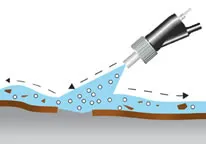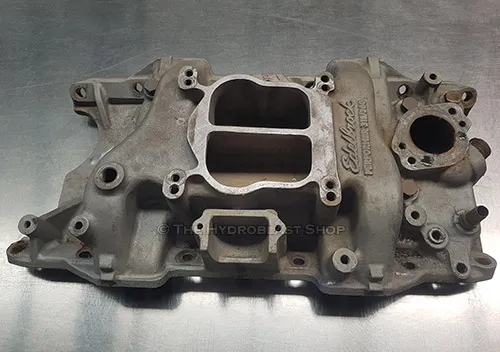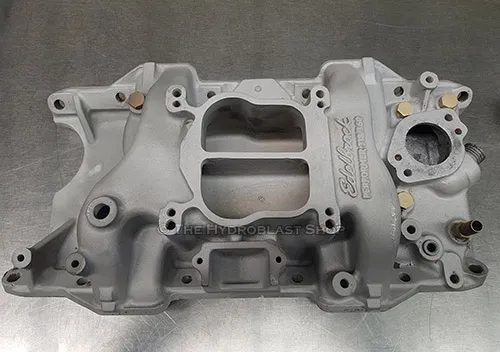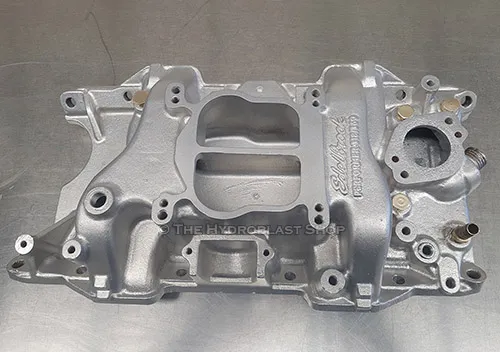So, what is Hydroblasting?
It is a metal finishing process. Hydroblasting uses a pressured stream of water to flow over the parts being processed. Hydroblasting has a lot of advantages over conventional sandblasting or bead blasting, as it's a cleaning and polishing process in one. We use a fine high quality glass bead as our primary media.
The glass bead media is forced at pressure on to the workpiece by a special slurry pump combined with compressed air. All the work is carried out and contained in an enclosed cabinet and the machine has a closed loop water system with a filtered water reservoir.

With hydroblasting, the abrasive / media mix is "pushed" or “flowed” over the surface of the object. The result is a much lower surface roughness and smoother appearance than that of dry blasting.
What is it used for?
The hydroblasting finishing process is ideally suited to industries that produce items in stainless steel and aluminium, and those seeking to restore machine parts, valves, and refrigeration components, mould cleaning, extrusion die cleaning and many other industries. Hydroblasting is also extensively used in aircraft, automotive and motorcycle component restoration. Hydroblasting also assists in stress relieving metal parts because of the gentle peening action.
Hydroblasting is particularly suitable for metals like Stainless steel, Aluminium, Bronze, Magnesium, Titanium, Brass, and Copper amongst others. The hydroblasting process will gently clean and polish the surface to a satin polished type finish. Hydroblasting is completely non-destructive unlike dry sand blasting which relies on firing a dry particle at high velocity, relying on impact of angular media to achieve a result.
Hydroblasting only removes grime, oxidation and tarnishing in a non-destructive way whilst also gently peening and polishing the surface, closing the pores of the material in most cases leaving a better than original finish resistant to further tarnishing, fingerprints and dirt.
 |
 |
 |
| Before blasting | After sandblasting | After hydroblasting |
We will always rinse the parts that have just been hydroblasted in water and dry by using an air supply to blow dry.
Although we use a flash rust inhibitor in our mixture, in the case of steel parts we may also apply a protection spray. This will force moisture off the part and further reduce the risk of rusting. This is only a temporary measure and we suggest you get any steel parts plated soon afterwards.



